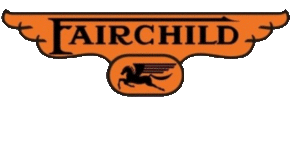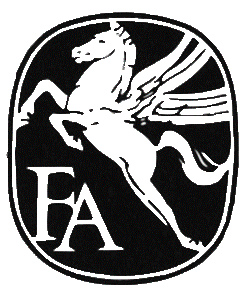
The Fairchild C-26 “Metroliner” is the designation for the Fairchild Swearingen Metroliner series twin turboprop aircraft in the service of the United States military.
Prototype construction of the Metro began in 1968 and the first flight was on August 26, 1969.
Swearingen Aircraft encountered financial difficulties at this stage, and late in 1971 Fairchild (which was marketing the Metro and building its wings and engine nacelles), bought 90% of Swearingen and the company was renamed Swearingen Aviation Corporation.
It was at this point that the previously cash-strapped company was able to put the Metro into production.
In 1974, the original Metro models were replaced by the SA226-TC Metro II after about 20 Metros and about 30 Merlin IVAs had been built.
Among the changes made were larger, squared-oval windows and optional provision for a small Rocket-Assisted Take Off (RATO) rocket in the tail cone, this being offered to improve take-off performance out of “hot & high” airfields in the event of an engine failure.
The Metro and Metro II were limited to a maximum weight of 12,500 pounds (5,670 kg) in the US and countries using imperial units, and 5,700 kg in countries using SI units.
When this restriction was lifted the Metro II was re-certified as the Metro IIA in 1980 with a maximum weight of 13,100 pounds (5,941 kg) and the Metro II’s TPE331-3 engines replaced by -10 engines of increased power.
The SA227-AC Metro III followed, also initially certified in 1980 for up to 14,000 pounds (6,350 kg), this increasing to 14,500 pounds (6,577 kg) as engines and structures were upgraded.
An option to go as high as 16,000 pounds (7,257 kg) was offered.
Externally, improvements incorporated into the Metro III were a 10 ft (3.05 m) increase in wingspan, four-bladed props, redesigned “quick-access” engine cowlings and numerous drag-reducing airframe modifications, including landing gear doors that closed after the gear was extended.
Once again, a corporate version was offered as the Merlin IVC (the model’s name was chosen to align with the contemporaneous short-fuselage Merlin IIIC).
A version with strengthened floors and the high gross weight option was offered as a cargo aircraft known as the Expediter. Both the Expediter and the Merlin IVC were designated the SA227-AT.
Finally, due to reliability problems with Garrett engines in the second half of the 1980s, the Metro IIIA was offered with two Pratt & Whitney Canada PT6A-45R turboprops in place of the Garrett units; however, none were actually delivered.
A special model was the SA227-BC Metro III built for Mexican airline AeroLitoral, which took delivery of 15 of the 18 of this models that were produced.
Improvements beyond the Metro III provided better systems, more power and a further increase in take-off weight.
This design effort resulted in the SA227 CC (for Commuter Category) and SA227-DC models, initially called the Metro IV then renamed Metro 23, so named as they were designed for certification under FAR Part 23 (Amendment 34) standards.
A Metro 23 EF with an external pod under the lower fuselage for greater baggage capacity was also offered as well as an Expediter 23 and Merlin 23.
The SA227-CC was an interim model with TPE331-11U engines and only a handful were built.
In the 1960s, Swearingen Aircraft developed a prototype SA-28T eight-seat jet aircraft with a flapless delta wing.
It shared the tail and cockpit with the Merlin/Metro.
The two engines were to be Garrett TFE731 turbofans then in development; they were originally to be mounted on the aft fuselage, however during the course of design work their location was moved to under the high-mounted wing.
Early flights were to be undertaken with General Electric CJ610 engines fitted.
Development continued after Fairchild acquired the company, but the project was shut down nine weeks from first flight.
It was later cut up as scrap and the fuselage used as a Metro display at trade shows.
At the 1987 Paris Air Show, Fairchild released details of proposed developments of the Metro designated the Metro V and Metro VI.
These versions would have featured a longer fuselage with a taller “stand-up” cabin providing 69 in (180 cm) of interior height for passengers; a redesigned, longer wing; engines moved further out on the wing from the fuselage; a “T-tail” and various system improvements.
A Merlin V corporate version of the Metro V was also planned.
The Metro V was to be fitted with the same engines as the Metro 23 and the Metro VI was to be fitted with more powerful TPE331-14 engines.
The Metro VI was shelved within months of being announced due to a lack of customer interest, but Fairchild did not proceed with the Metro V either.
One version that did see the light of day was the Metro 25, which featured an increased passenger capacity of 25 at the expense of the baggage space found in earlier models: the deletion of the left rear cargo door, the addition of a passenger door on the right-hand rear fuselage, and a belly pod for baggage.
A Metro III was converted as a Metro 25 demonstrator, it flew in this configuration in October 1989.
Also mooted but not built was the Metro 25J, which would have been another jet-powered aircraft with TFE731s in over-wing pods.
The type certificates for Metro and Merlin aircraft are currently held by M7 Aerospace.
Variants
-
C-26A
Military version of the Metro III (Model SA227-AC).
-
C-26B
Military version of the Metro III (Model SA227-BC) and Metro 23 (Model SA227-DC).
-
RC-26B
C-26B modified with electronic surveillance equipment for drug interdiction missions.
-
UC-26C
Was a used 1983 built Merlin IVC operated for several years as 89-1471.
-
Modified with an integrated sensor package including forward looking infrared and high-resolution radar.
-
C-26D
C-26Bs transferred from USAF inventory and modified with new navigation equipment for the US Navy, four used for rapid response cargo and passenger transportation in Europe.
-
EC-26D
One range support aircraft operated by the US Navy’s Pacific Missile Range Facility at Barking Sands.
-
RC-26D
Two range support aircraft operated by the US Navy’s Pacific Missile Range Facility at Barking Sands with installed radar units.
-
C-26E
Upgrade of 11 C-26B aircraft including an improved Rockwell Collins Proline 21 Electronic Flight Instrument System.
Specifications
Crew
2
Capacity
19 passengers
Length
59 ft 4 in (18.08 m)
Wingspan
57 ft 0 in (17.37 m)
Height
16 ft 8 in (5.08 m)
Wing area
310 sq ft (29 m2)
Airfoil
NACA 65A215
Empty weight
8,737 lb (3,963 kg)
Max take-off weight
14,500–16,000 lb (6,577–7,257 kg) depending on model
Powerplant
2 × Garrett AiResearch TPE-331 turboprop engines,
1,000 shp (750 kW) each
1,100 shp (820 kW) with alcohol-water injection
Propellers
4-bladed McCauley 4HFR34C652
Or
Dowty Rotol R.321/4-82-F/8
Performance
Maximum speed
311 kn (358 mph, 576 km/h)
Cruise speed
278 kn (320 mph, 515 km/h)
Range
594 nmi (684 mi, 1,100 km)
Service ceiling
25,000 ft (7,600 m).


